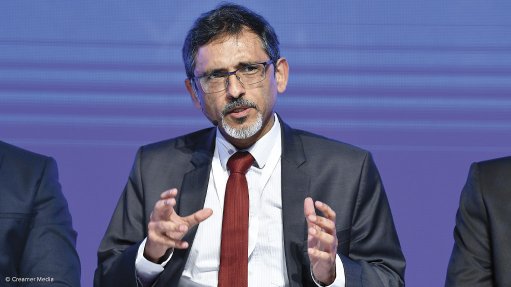Dream on, National Treasury
On August 27, the National Treasury released a 59-page economic policy paper titled ‘Economic Transformation, Inclusive Growth, and Competitiveness: Towards an Economic Strategy for South Africa’. It invited comment on the document by September 15.
As I scanned the contents of the document, I was immediately reminded of the Everly Brothers’ classic, All I have to do is dream.
The document’s 164-word abstract has an interesting opening sentence, which is open to multiple interpretations. “The combination of low growth and rising unemployment means that South Africa’s economic trajectory is unsustainable.” The abstract then refers to “five fundamental building blocks of sustainable long-run growth” and concludes by stating: “We estimate the economywide impact of the proposed interventions over time, based on when they can realistically be implemented, and find they can raise potential growth by two to three percentage points and create over one-million job opportunities.”
This is an awfully long sentence and, to be kind, quite confusing. There are simply to many thoughts, and it lacks clarity. For instance, confusingly ‘we estimate’ and ‘find’. Surely, you estimate both. Even then, how can you make an impact estimation when the period is not even known? And what does “realistically be implemented” mean?
A few interesting observations: What is the difference between jobs and job opportunities? Just how sustainable are the job opportunities? How will these job opportunities be distinguished from job opportunities that would have resulted irrespective of this paper’s proposed interventions? The same applies to potential growth.
And to be clear as to what ‘a percentage point’ means – it is the unit for the arithmetic difference of two percentages. So, if economic growth increases from 4% to 6%, this will be a two-percentage-point increase.
In summary, the proposed interventions, which are not time-specified, need to be realistically implemented and can potentially boost growth and create over one-million job opportunities. This sounds like a dream sequence.
And just how will the proposed growth be achieved? The paper contends that the growth will be achieved through the implementation of a series of growth reforms, organised according to five themes, namely modernising network industries; lowering barriers to entry and addressing distorted patterns of ownership through increased competition and small business growth; prioritising labour-intensive growth in sectors such as agriculture, services and tourism; introducing a focused and flexible industrial and trade policy; and promoting export competitiveness and harnessing regional growth opportunities.
The intention of government’s growth reforms is to promote economic transformation, support labour-intensive growth and create a globally competitive economy.
It is not clear who will be investing in the modernisation of the network industries of public goods: electricity, telecommunications, transport and water. The only investment incentive would surely be guaranteed returns. As for the lowering of barriers to entry, this is nothing new. What would be different this time around? It is a case of déjà vu all over again.
The prioritisation of agriculture and tourism for labour-intensive growth is counterintuitive. It is the perpetuation of the flawed belief of the economic ‘benefits’ bestowed by a depreciating rand.
With respect to the implementation of a focused and flexible industrial and trade policy, be cognisant of the fact that government has an apparent knack for conceptualsing policy documents, but not for their implementation. Most worrying is the statement about “increasing experimentation and piloting of industrial policy options”.
If ever there is economic thinking that needs to be put out to pasture, it is the vision of South Africa’s export prowess. Were it not for South Africa’s fellow Southern African Customs Union member countries, the country’s monthly trade balance would be in deficit.
After perusing the document, one can but concur with the lyrics from the Everly Brothers: “Only trouble is, Gee whiz, I’m dreamin’ my life away.”
Comments
Announcements
What's On
Subscribe to improve your user experience...
Option 1 (equivalent of R125 a month):
Receive a weekly copy of Creamer Media's Engineering News & Mining Weekly magazine
(print copy for those in South Africa and e-magazine for those outside of South Africa)
Receive daily email newsletters
Access to full search results
Access archive of magazine back copies
Access to Projects in Progress
Access to ONE Research Report of your choice in PDF format
Option 2 (equivalent of R375 a month):
All benefits from Option 1
PLUS
Access to Creamer Media's Research Channel Africa for ALL Research Reports, in PDF format, on various industrial and mining sectors
including Electricity; Water; Energy Transition; Hydrogen; Roads, Rail and Ports; Coal; Gold; Platinum; Battery Metals; etc.
Already a subscriber?
Forgotten your password?
Receive weekly copy of Creamer Media's Engineering News & Mining Weekly magazine (print copy for those in South Africa and e-magazine for those outside of South Africa)
➕
Recieve daily email newsletters
➕
Access to full search results
➕
Access archive of magazine back copies
➕
Access to Projects in Progress
➕
Access to ONE Research Report of your choice in PDF format
RESEARCH CHANNEL AFRICA
R4500 (equivalent of R375 a month)
SUBSCRIBEAll benefits from Option 1
➕
Access to Creamer Media's Research Channel Africa for ALL Research Reports on various industrial and mining sectors, in PDF format, including on:
Electricity
➕
Water
➕
Energy Transition
➕
Hydrogen
➕
Roads, Rail and Ports
➕
Coal
➕
Gold
➕
Platinum
➕
Battery Metals
➕
etc.
Receive all benefits from Option 1 or Option 2 delivered to numerous people at your company
➕
Multiple User names and Passwords for simultaneous log-ins
➕
Intranet integration access to all in your organisation


















